Drive Away Hunger Golf Classic 2025
Join Community Table on August 25 at Fossil Trace Golf Club
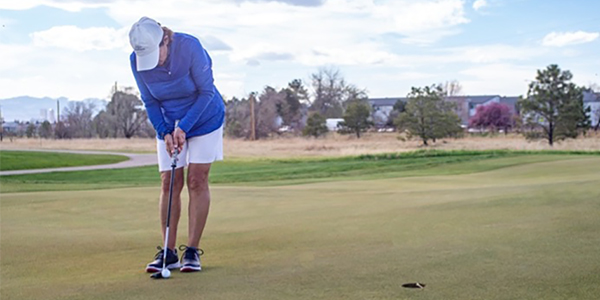 Why short putts and long strokes don’t mix.
Why short putts and long strokes don’t mix.
By Elena King
Photographs By E.J. Carr
Whether they’re from three, six or 10 feet, nothing exasperates a golfer more than those short putts that slide past, lip out or somehow come up short.
One of the most common reasons for this is stroke length. If you tend to take a long backstroke for a short putt, you intuitively know that if you go through just as far as you take it back the ball will roll way too far past the hole. So, you decelerate to shorten the forward stroke. This can lead to more rotation of the putter face in the hands, resulting in the ball rolling off your intended line, or to a putt that lacks sufficient pace to reach the hole.
The length of the putting stroke is crucial to have consistency with tempo, distance control and little or no rotation of the putter face in your hands. With the many advances in technology, science is proving that longer stroke increases the probability of greater putter face rotation. Therefore, knowing appropriate lengths of the stroke will make a big difference in your overall putting.
With these drills and on course, it is very helpful to match your practice stroke length to the actual stroke. We observe many times the two do not match up.
TAKE NOTE
These measurements are all based on an average green speed of 10 on a Stimpmeter. On a green Stimping at 10, the ball will stop 6 to 12 inches past the hole if it misses. Depending on the actual speed of the green and your tempo, you will need to make proportional adjustments in your stroke length. Inspiration for this drill comes from Dr. Craig Farnsworth and PGA TOUR pro Brad Faxon.
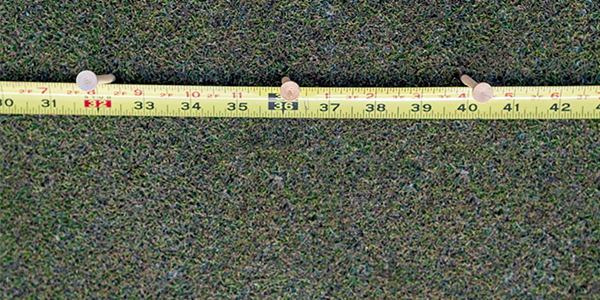
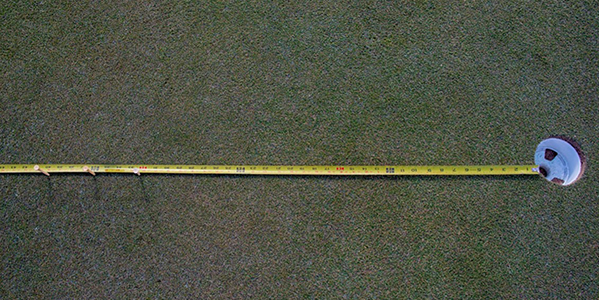
Bring your putter, three tees and a ruler or tape measure to a green. Measure three feet from the hole and slide in a tee. Place a second tee 4 inches beyond the first tee (3’ 4” from the hole) and the third tee 3 ¾ inches in front of the 3’ tee (2’ ¼” from the hole).
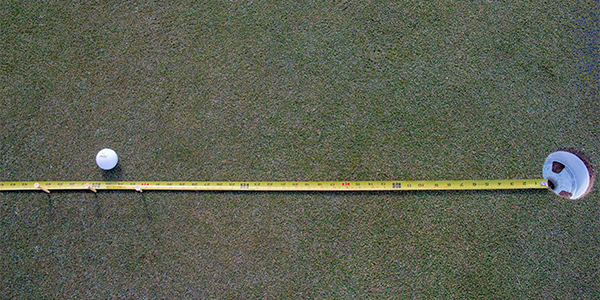
Place the back of the ball at the middle tee (the one at 3 feet).
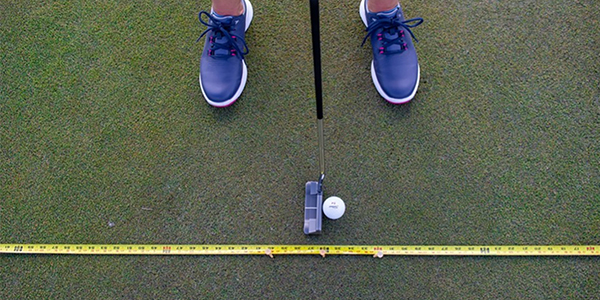
Line up to putt with your putter face directly behind the ball at the 3’ mark.
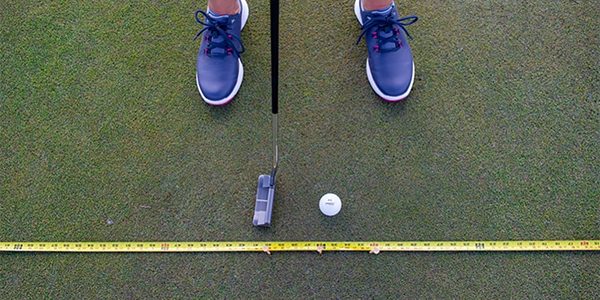
Take the putter face back to the tee placed 4” behind the ball.

Take a smooth forward stroke where the putter face stops at the tee placed at 3 ¾”.
After practicing this length of stroke numerous times to get the feel of what the appropriate length of the stroke should be for a 3-foot putt, remove the tape measure and start hitting your 3-foot putts to the hole. For a 6-foot putt, place the tees at 6 feet and put a tee at 6’ 6” and one at 5’ 7” from the hole. For a 10-foot putt, place the tees at 10’, 10’8” and 9’ 1”.
Another challenge on the green comes when we find our ball above or below the hole. Downhill and uphill putts also require practice. These two drills will help. Both require sticking a tee in the back of the hole so it covers almost half of the opening of the hole. You can use both drills from 3 to 15 feet.
Hit the putt with just enough speed that it drops in the hole without hitting the tee sticking out of the back of the cup (falls into the first ½ of the cup)
Elena King, an LPGA Top 50 Teacher, is the owner and director of instruction of ExperienceGolf experiencgolf.biz the exclusive provider for golf instruction at CommonGround Golf Course. Reach her at [email protected] or 303-503-0330.
This article can also be found in the June Issue of Colorado AvidGolfer.
Colorado AvidGolfer is the state’s leading resource for golf and the lifestyle that surrounds it, publishing eight issues annually and proudly delivering daily content via coloradoavidgolfer.com.
Join Community Table on August 25 at Fossil Trace Golf Club
Steamboat Springs is like a secret only you and your friends know
Vail Valley is home to an endless array of summer outdoor pursuits